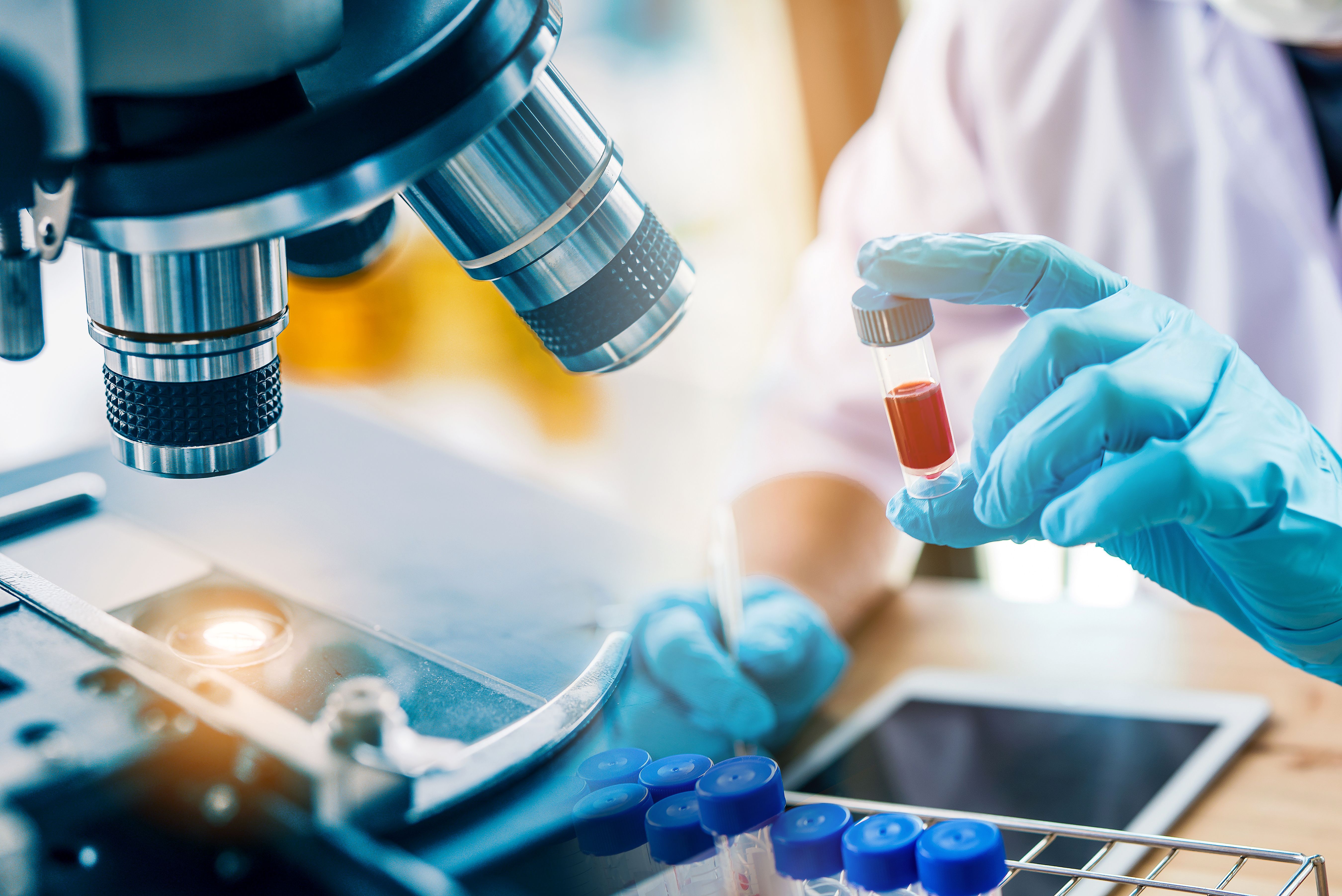Pittcon 2024: Detecting Nitrosamines Using Gas Chromatography–Electron Capture Detection
On February 25, at Pittcon in San Diego, California, He Nan, senior scientist at AbbVie, held a lecture on N-nitrosamines. Han gave an overview of the risks associated with N-nitrosamines in pharmaceutical compounds, as well as how to monitor them via gas chromatography–electron capture detection (1).
lab technician assistant analyzing a blood sample in test tube at laboratory with microscope. Medical, pharmaceutical and scientific research and development concept. | Image Credit: © totojang1977 - stock.adobe.com

Though LC–MS has been used for detecting numerous N-nitrosamines, this method does not work best with compounds with poor ionization efficiency. As such, Nan and his team did a case study on how halogenated N-nitrosamine can be detected with ultrasensitive gas chromatography-electron capture detection. According to the team, this method achieved a limit of detection (LOD) of 20 parts per billion (ppb), all while no detectable levels of N-nitrosamine could be found in pharmaceutical compounds with complex sample matrices.
Nitrosamines are carcinogens that can be found in products like processed meats, alcohol, and cosmetics. These substances have been known to potentially cause cancer in the lungs, brain, kidneys, and stomach (2). The presence of N-nitrosamines in different marketed products has led to multiple recalls, with N-nitrosamines being listed in International Council for Harmonisation of Technical Requirements for Pharmaceuticals for Human Use (ICH) M7 guidelines as cohort of concern compounds (3).
This has led to worldwide regulatory expectations for pharmaceutical products to limit their presence within products. Specifically, an EMA procedure has utilized an 18 ng/day limit if no allowable daily intake is established for N-nitrosamine unless higher limits can be justified based on ICH M7 guidelines. With such stringent limitations, highly sensitive and robust analytical methods are needed to fulfill these requirements. However, this process can prove difficult due to existing methods involving low sensitivity and the list of controlled compounds continuously growing (4).
References
(1) Nan, H. Investigation of Potential Risk of N-Nitrosamines in Pharmaceutical Compounds with Complex Sample Matrix by Ultrasensitive Gas Chromatography–Electron Capture Detection. Pittcon and The Pittsburgh Conference on Analytical Chemistry and Applied Spectroscopy, Inc. 2024. https://labscievents.pittcon.org/event/pittcon-2024/planning/UGxhbm5pbmdfMTY2NzgzOQ== (accessed 2024-2-21)
(2) Robles, H. Nitrosamines. ScienceDirect 2014. https://www.sciencedirect.com/topics/earth-and-planetary-sciences/nitrosamine (accessed 2024-2-21)
(3) Assessment and Control of DNA Reactive (Mutagenic) Impurities in Pharmaceuticals to Limit Potential Carcinogenic Risk. International Council for Harmonisation of Technical Requirements for Pharmaceuticals for Human Use 2017. https://database.ich.org/sites/default/files/M7_R1_Guideline.pdf (accessed 2024-2-21)
(4) Khorolskiy, M.; Ramenskaya, G.; Vlasov, A.; Perederyaev, O.; Maslennikova, N. Development and Validation of four Nitrosamine Impurities Determination Method in Medicines of Valsartan, Losartan, and Irbesartan with HPLC-MS/MS (APCI). Iran. J. Pharm. Res. 2021, 20 (3), 541–442. DOI: 10.22037/ijpr.2021.115102.15195
New Study Reviews Chromatography Methods for Flavonoid Analysis
April 21st 2025Flavonoids are widely used metabolites that carry out various functions in different industries, such as food and cosmetics. Detecting, separating, and quantifying them in fruit species can be a complicated process.
University of Rouen-Normandy Scientists Explore Eco-Friendly Sampling Approach for GC-HRMS
April 17th 2025Root exudates—substances secreted by living plant roots—are challenging to sample, as they are typically extracted using artificial devices and can vary widely in both quantity and composition across plant species.
Sorbonne Researchers Develop Miniaturized GC Detector for VOC Analysis
April 16th 2025A team of scientists from the Paris university developed and optimized MAVERIC, a miniaturized and autonomous gas chromatography (GC) system coupled to a nano-gravimetric detector (NGD) based on a NEMS (nano-electromechanical-system) resonator.

.png&w=3840&q=75)

.png&w=3840&q=75)



.png&w=3840&q=75)



.png&w=3840&q=75)







